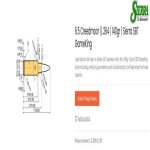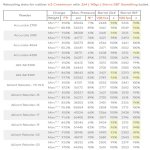I have a question about the Satterlee ladder test while working up a load.
The method described by him states that he starts 1.5gr below his max load then works his way up at .2gr intervals.
Everything I've always read and have been told is to ALWAYS start at the minimum charge.
Some of my cartridges have a diff between min and max of like less than 3gr so no big deal to do a ladder test for the whole spread at .2gr and you still only have 11 rounds, other cartridges would take over 40 rounds to test the whole spread at .2gr intervals.
Is it safe to start at the half way mark and work up, inspecting each case for signs of pressure and noting velocity of course?
The method described by him states that he starts 1.5gr below his max load then works his way up at .2gr intervals.
Everything I've always read and have been told is to ALWAYS start at the minimum charge.
Some of my cartridges have a diff between min and max of like less than 3gr so no big deal to do a ladder test for the whole spread at .2gr and you still only have 11 rounds, other cartridges would take over 40 rounds to test the whole spread at .2gr intervals.
Is it safe to start at the half way mark and work up, inspecting each case for signs of pressure and noting velocity of course?










































































